Words Amicia de Moubray Photographs Justin Croft, Amicia de Moubray and Posy Gentles
One day last week I set out with my fellow Faversham Life writers, Justin Croft and Posy Gentles, and the dog Maus, on the Augustine Camino walk from Doddington to Faversham. (We walked the section from Faversham to Canterbury last year. See FL article here). It is the ancient east-west route of colonising Roman settlers and later, of pilgrims to the Shrine of St Thomas à Becket in Canterbury, and travellers from London to the Continent.
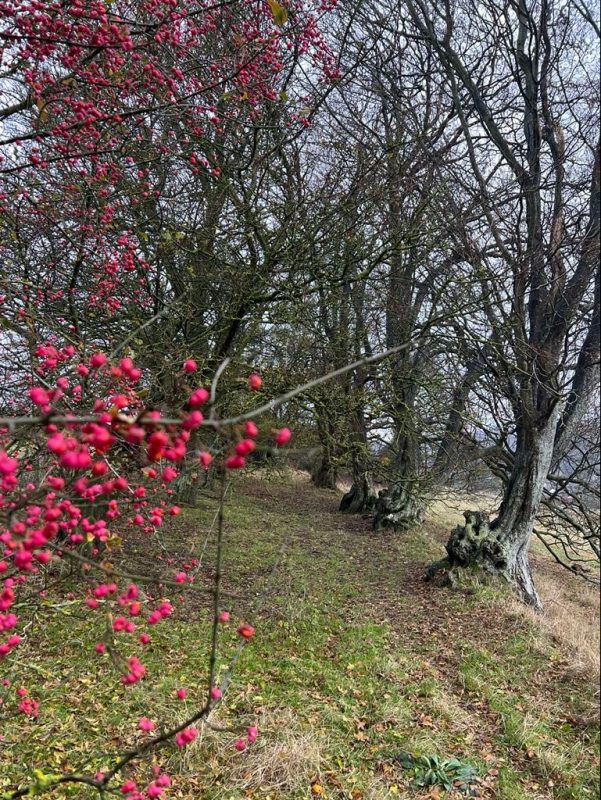
Spindle berry adds a dash of ‘Schiaparelli pink’ to an ancient drovers’ way
The walk began auspiciously at the intriguing parish church, situated on a hill above the village of Doddington and dedicated to the Beheading of St John the Baptist. Doddington shares this somewhat alarming dedication with one other church, in Trimingham, Norfolk. The tower, weatherboarded in the 19th century, is savagely dismissed by Pevsner as ‘absurd’ but persevere, and step inside to marvel at the mid 13th century wall painting of St Francis receiving the stigmata. It is believed to be the earliest known depiction of the saint in the country. It was referred to in the recent St Francis exhibition at the National Gallery.
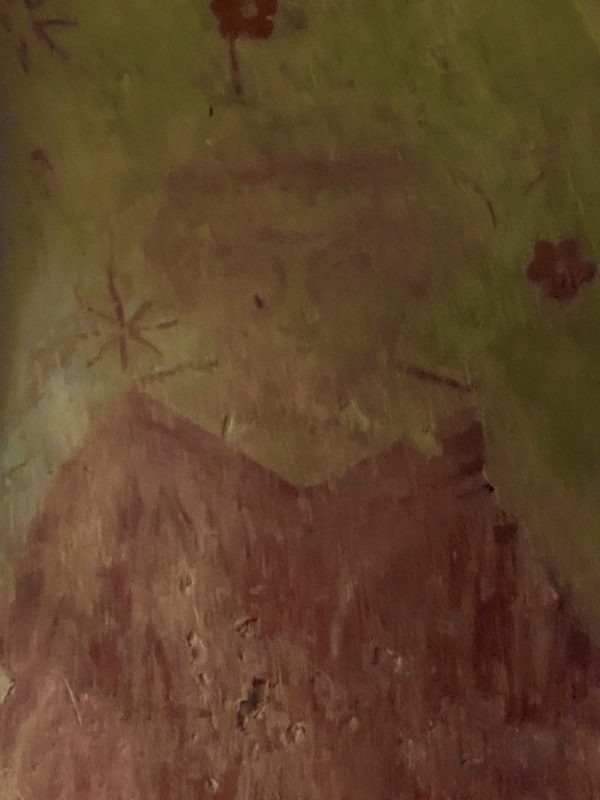
The 13th century wall painting of St Francis of Assisi in The Beheading of John the Baptist in Doddington.
Leaving the ecclesiastical delights behind, we walked across the park of Doddington Place to Sharsted Wood.
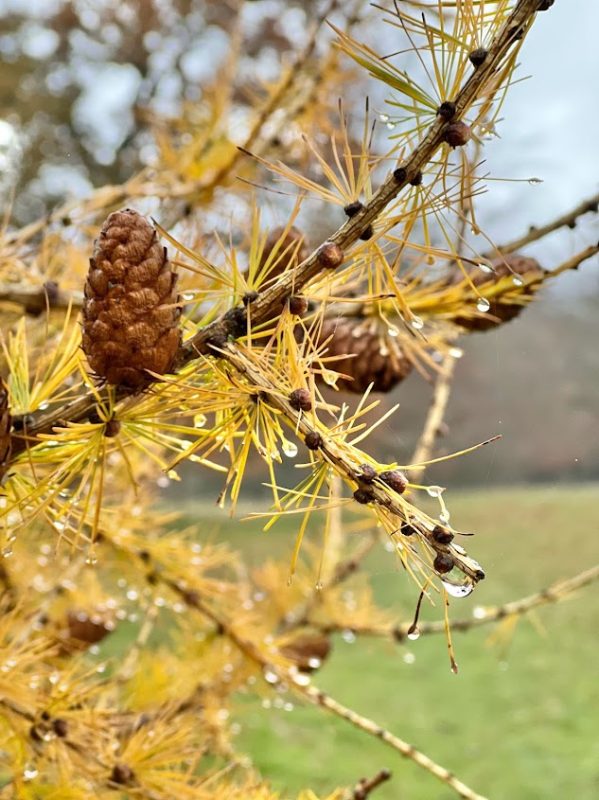
It was a damp start but we were cheered by Amicia remarking on the beauty of these raindrops on deciduous larch in Doddington Park
A glimpse in the far distance of Sharsted Court, once home to the romantically named Faunce de Laune family, drew us on. A largely early 18th century red brick house with early 20th century additions, this house was, astonishingly, very nearly demolished for the value of its bricks after the Second World War. We peered through the handsome wrought iron gates at the garden which boasts several splendid examples of ancient topiary.
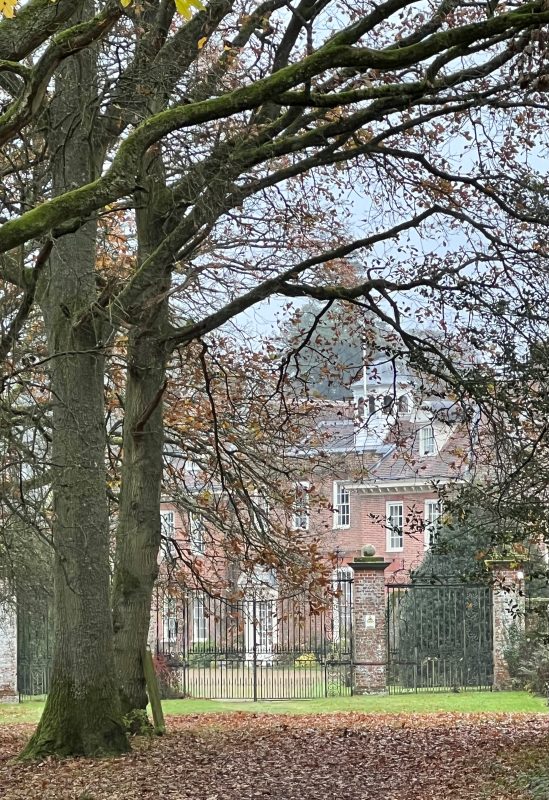
Sharsted Court
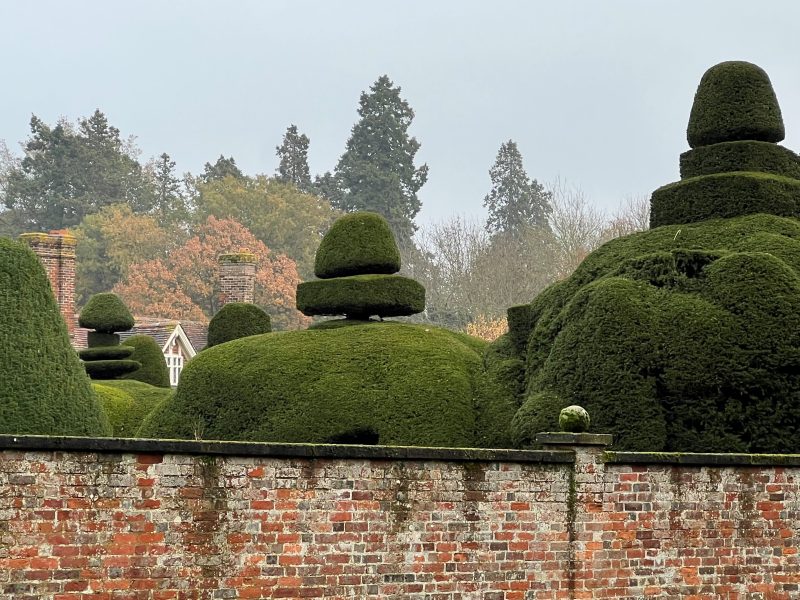
Sharsted’s topiary features what looks like an elephant complete with howdah skulking on the right
Next, we couldn’t resist slightly deviating from the route (go through the wooden kissing gate on your left) to marvel at what must be the remnants of an old drovers’ path complete with a rich medley of marvellously twisted ancient trees including a spindle berry resplendent with vivid pink berries – ‘the pink of Schiaparelli,’ exclaimed Posy.
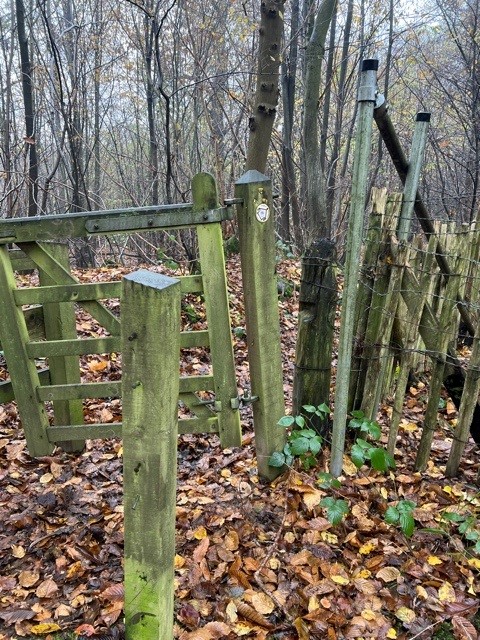
The stickers marking the Augustine Camino are minuscule and usually stuck on the existing footpath sign – but not always
We then dipped down the hill, turning left in Newnham, crossing the road to take the footpath on the right just before the end of the village and then climbing up along a wooded incline to emerge high above the Syndale valley. The view across the valley looks over to orchards and a new vineyard on the opposite slope. Next followed a dull, but luckily short, stretch of pounding along a road. One caveat is that it is often difficult to spot the minuscule sticker denoting the Augustine Camino route.
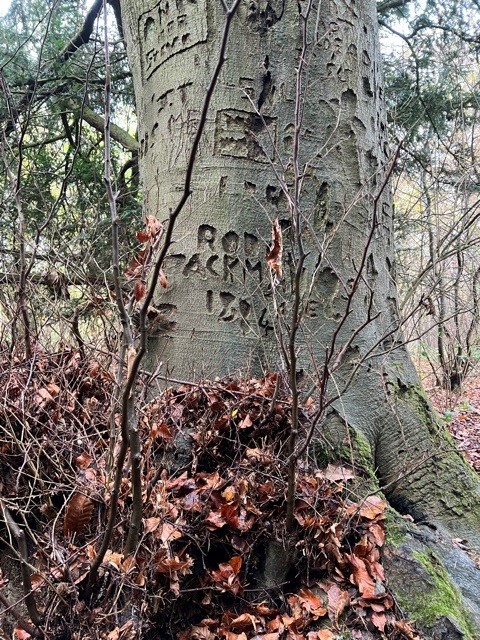
There is something about graffiti on trees that is fascinating. Spot this tree on the left of the path from Newnham
On we went, momentarily lost as we were distracted in admiration of Maus, Posy’s chic little poodle, silhouetted against the backdrop of the North Downs landscape. Wandering through an apple orchard, we naughtily picked an apple each. (They had clearly been left behind by the fruit pickers). As we chomped on them, we all agreed that they were the best apples we had tasted in ages, crisp and sweet and of course, all the more pleasurable for being illicit.
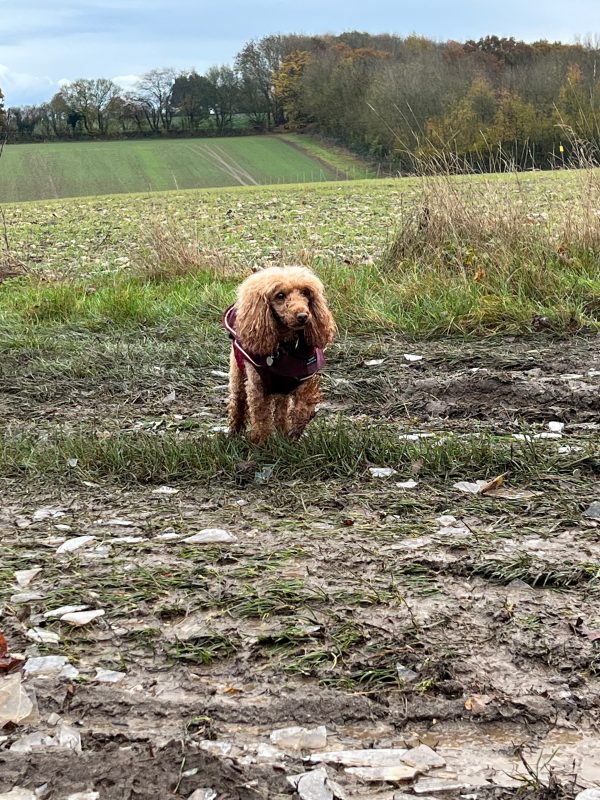
Maus gambolling over the valleys of the North Downs on the Augustine Camino route
Emerging at Painters Forstal and passing two medieval houses, we were surprised to see to the recently constructed state-of-the-art village hall.
Crossing the road, we found ourselves in a large field above Ospringe looking out to the sea. After Ospringe churchyard (see FL article on Ospringe Church) we turned left to pass the ancient Wealden Hall house, Queen Court, dating from c 1500, and then towards the A2 and the Maison Dieu, once a major hospital on the road from London to Canterbury, granted a royal charter in 1234. It is worth pondering for a moment on the thousands of pilgrims who have passed this way through the centuries, and also, as Justin pointed out, the numerous Royal monarchs.
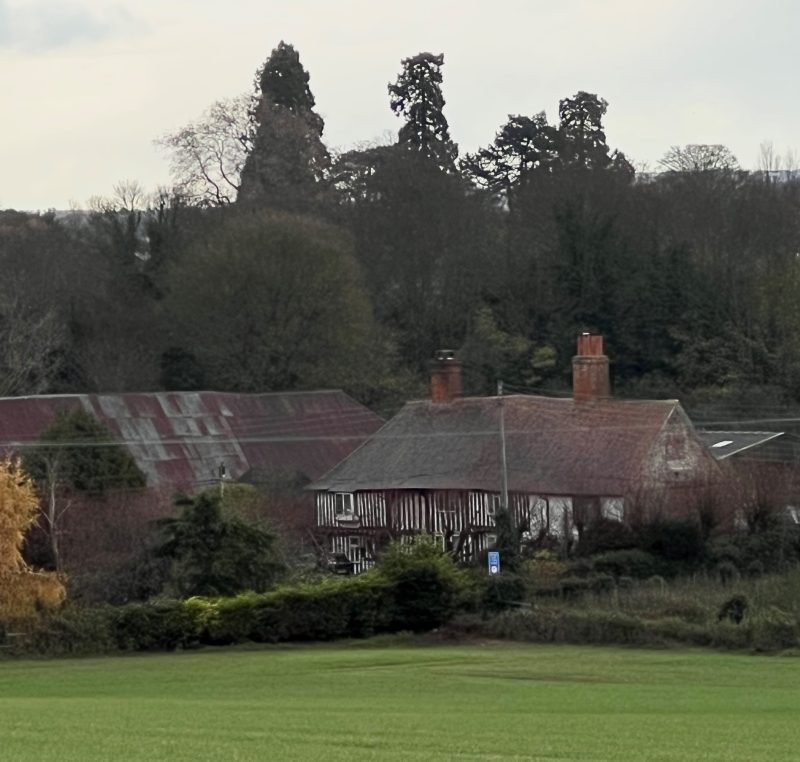
Queen Court, a venerable Wealden Hall House in Ospringe
Once in Faversham, just before the Almshouses we took a left turn to the Catholic church of Our Lady of Mount Carmel in Tanners Street (see FL article), and explored the national Shrine of St Jude – the Apostle of Hope. The shrine was founded in 1955 by Carmelite friar Fr Elias Lynch to bring hope to the postwar generation. There is much to see including the Augsberg Reliquary containing a bone fragment of St Jude and a serene set of icons.
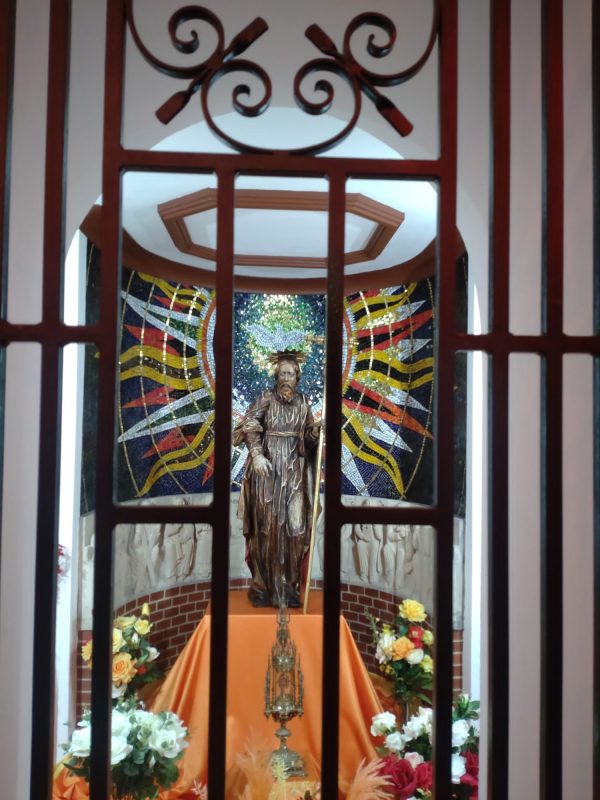
The Shrine of St Jude
To finish, we strolled into the middle of the town to St Mary of Charity. Having walked very nearly nine miles in just over three hours, we were in dire need of sustenance. Happily, Posy had kindly cooked a richly spiced Ethiopian stew with roast cabbage. It was the perfect end to a happy morning.
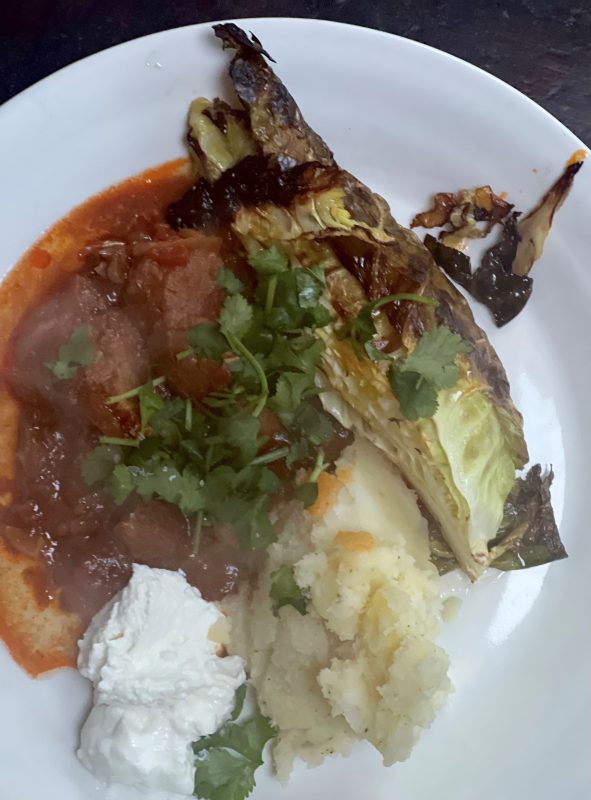
Ethiopian Stew and roasted Hispi cabbage